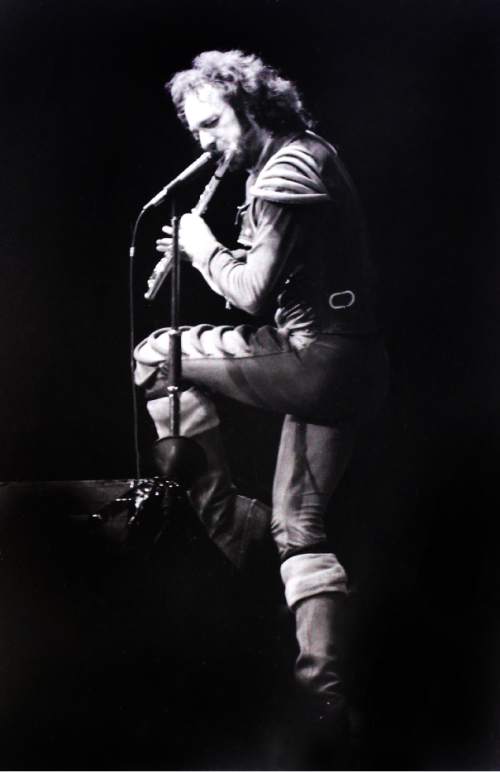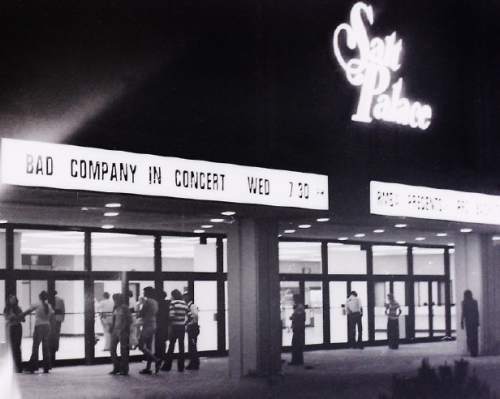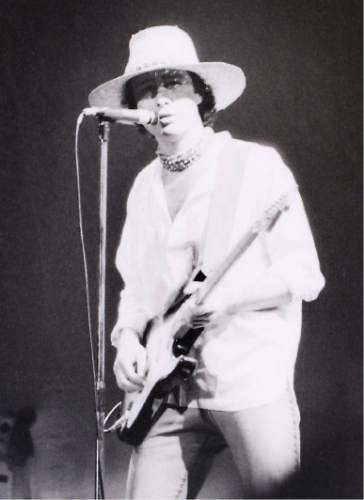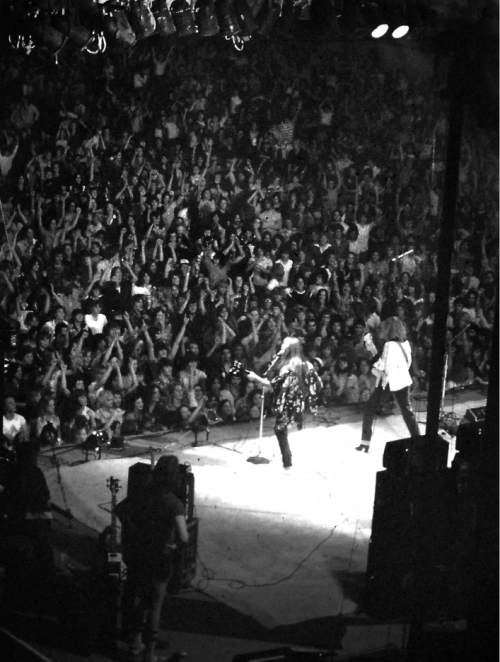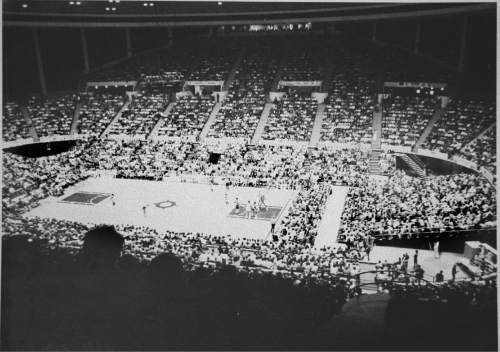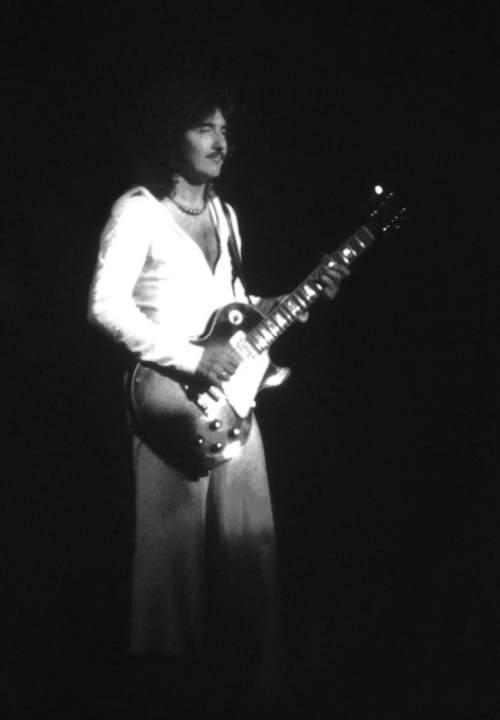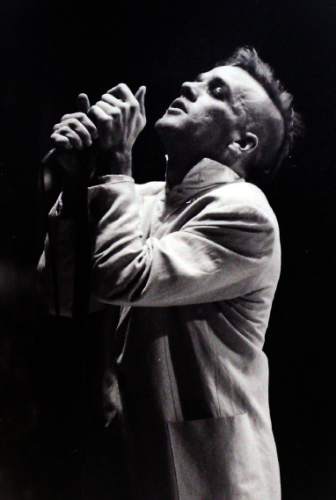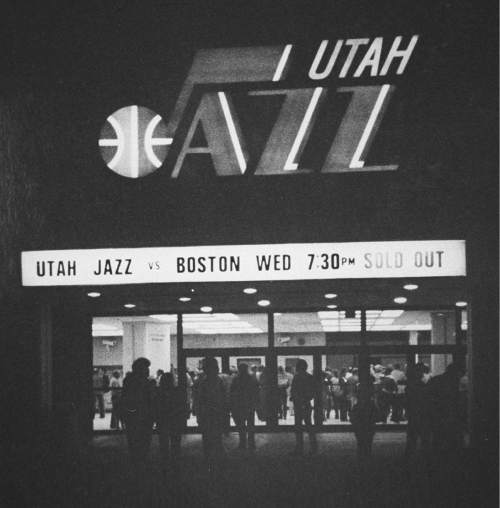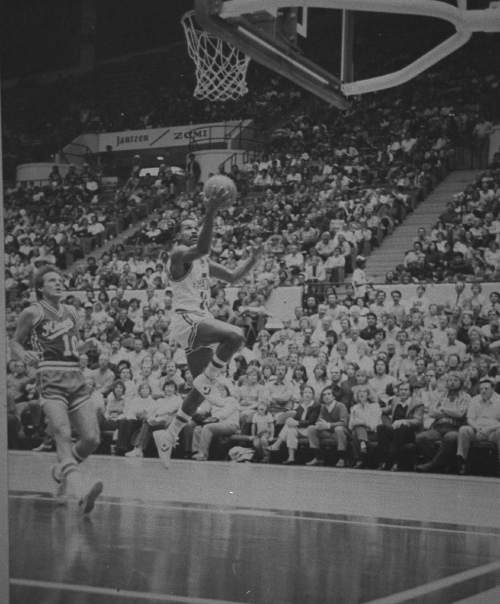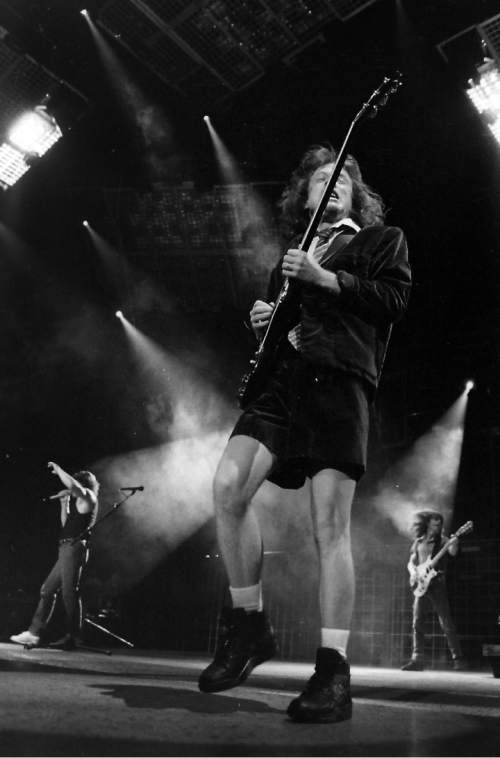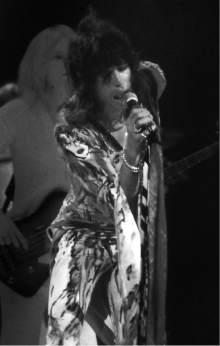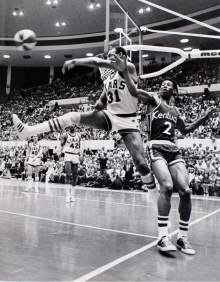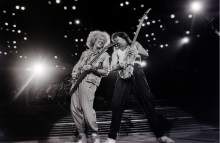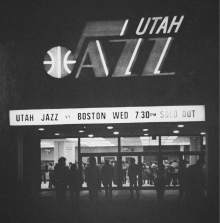This is an archived article that was published on sltrib.com in 2015, and information in the article may be outdated. It is provided only for personal research purposes and may not be reprinted.
Editor's note: In this regular series, The Tribune explores the once-favorite places of Utahns, from restaurants to recreation to retail.
Critics predicted a quick demise for the Salt Palace arena. They doubted that the Salt Lake City of the 1960s could attract major sports teams and big concerts to fill what they expected would become an empty white elephant.
They were right about one thing — the drum-shaped arena downtown didn't last long, just 25 years from 1969 to 1994. But success, not empty seats, killed it.
Big concerts and pro sports did come — and the Salt Palace vaulted Salt Lake City into the major leagues for the first time. But the arena soon was too small and too vanilla-plain for such big events, and was replaced by the jazzier Delta Center — later renamed EnergySolutions Arena.
The Salt Palace arena now has been gone for nearly as many years as it existed. But it's remembered fondly by many, including former Utah Jazz coach Frank Layden — even though it made a poor first impression on him.
"I hadn't seen any NBA arena this small," Layden recalls. It seated just 12,666 people for basketball, compared to 19,911 in the EnergySolutions Arena.
"The locker rooms were small. The shower rooms were small. The office was small. I got the impression: it doesn't seem like it's real big league."
But Layden learned to love the building once the team started playing there.
"I realized it was wonderful. It was cozy, it was more like a college game," he says, remembering that it did not have a balcony and fans sat near the action. "We had the greatest fans. We had a band. We had a booster club. You could hear them and they were up close. It truly was a lot of fun to play games there."
The Salt Palace became the state's heart of entertainment and sports during its short life, and a symbol that Salt Lake was maturing into a grown-up city.
Elvis Presley and Frank Sinatra performed there, as did such widely diverse entertainers as Lawrence Welk, Bob Dylan, Ozzy Osbourne, Billy Joel, Boston, Styx and John Denver.
"Whenever hard rock bands played, they didn't seem to get much cooperation from the 'grown-ups,' " Tribune reader Beverly Shirts, who worked at the Salt Palace as an usher when she was a teenager, posted on Facebook. "I remember many a time helping bands and roadies find power extension cords, or a place to plug in."
After Shirts left her job as an usher, she came back to the Salt Palace for a Jethro Tull concert. It was general admission, and Shirts was "nearly crushed to death in the stampede to the door," she recalled. "Luckily, a huge guy saw me, and decided to step in and save my life by pulling me up. I remember his arms were bigger than my waist — solid muscle."
Years later, during a Jan. 18, 1991, concert by rock band AC/DC, three teens were trampled to death when the crowd rushed the stage.
—
Sports • The palace also staged big political gatherings. Presidents Richard Nixon, Ronald Reagan, George H.W. Bush and Bill Clinton all spoke to crowds there. But the arena was best known for sports — and was home of the Jazz, the major-league Utah Stars of the old American Basketball Association, the minor league Salt Lake Golden Eagles hockey team and the short-lived Salt Lake Stingers pro volleyball team.
The arena's first tenant was the Golden Eagles in 1969. While many wondered if hockey tickets would sell in Utah's desert, the team proved successful — winning five league championships and some years drawing about as many fans as the major-league Stars and Jazz.
The hockey league "was rough and wild," says Becky Stauffer of North Salt Lake. "I remember the night Neil LaBatte got checked into the boards right in front of us and separated his shoulder — we all thought he was dead. ... But some great players came out of Salt Lake — like Joey Mullen."
"The building for hockey was fabulous. It had great sight lines. We loved that arena," remembers Marc Amicone, former general manager of the Golden Eagles, who's now the general manager of the Salt Lake Bees. "The place was rocking all the time."
Stauffer recalls that fans could skate on the ice after Saturday-night games, and the tradition of the lucky-number puck shoot between periods, when someone in the audience would get called to put the puck "through a tiny slot in a board from center ice."
Amicone remembers that some team promotions didn't work out as well.
"We may have been one of the first to do fireworks indoors," ignited during team introductions in a playoff game, he says. "Whatever was burning leaked onto the ice as the team came on. We melted holes in the ice, and it delayed the game for 15 or 20 minutes."
The Golden Eagles would later move to the EnergySolutions Arena. But when its league folded, the team managed to jump to a new one only by promising to pay the travel costs of visiting teams — soon leading it to disappear like the old arena.
The Utah Stars became the state's first major-league team, moving from Los Angeles in 1970-71. The team won the ABA championship its first year — with a 131-121 seventh-game home victory over the Kentucky Colonels. Jubilant fans rushed the court, creating arguably the most-remembered moment in the arena.
Utahns seemingly overnight traded in their brown basketballs for the red, white and blue versions used by the ABA and their beloved Stars players including Ron Boone, Zelmo Beaty and Willie Wise. The Stars would later draft Moses Malone out of high school.
The Stars won the western division four times, and returned to the ABA finals (but lost) in 1973-74. But the team owner had financial problems from other business ventures, which led the franchise to fold in 1975.
—
Utah Jazz • The Jazz moved to Utah in 1979 from New Orleans — but struggled in the early years.
"I would invite people to the games, and nobody would come with me," says longtime Jazz season-ticket holder Stan Kouris, owner of Stan's Market in Kearns.
But those who did attend were able to get close to the action.
"Back in those days, kids could go through the velvet rope as the players were warming up to get an autograph," Tribune reader Mat Carter posted on Facebook. "I got John Stockton's autograph when he was a rookie in 1984."
Kouris says Jazz players, when injured, would often come sit in empty seats by him to visit. He adds that unlike games now with loud music, booming sound effects and huge scoreboards, "the only thing that was loud back then was the fans."
Layden also remembers the more quiet palace. "There was a guy across the way from our bench, and there was a guy behind our bench. The guy behind our bench hollered over to the other guy because he was the hot-dog man, 'Hey, bring the hot dogs over here.' Everybody in the arena could hear him. That shows you what kind of crowds we were getting."
Simple, small scoreboards were installed at the ends of the arena. "They were kind of antiquated, but you could put messages up," Layden says. "One of the first games, I put a message up wishing my wife a happy birthday. The only problem was I picked the wrong date. That led to some problems. I told her it must be the mistake of the scoreboard guy."
The small arena with simple scoreboards — and no luxury suites — became a problem.
The first time former NBA commissioner Larry O'Brien attended a game in the palace, Layden recalls, "He said to me that night, 'Frank, the day is going to come, and it's going to be sooner than later, you're going to have to get a new arena. I don't think this is up to NBA standards.' "
Layden responded, "OK, but right now we're not drawing to where there's any pressure on the size of the building."
Later success with stars such as John Stockton and Karl Malone helped the Jazz start selling out constantly — and the Jazz needed more capacity and better amenities to generate revenue.
So the late Utah Jazz owner Larry H. Miller built the Delta Center with his own money — but Salt Lake County promised that the Salt Palace would not compete for concerts or other events. That doomed the arena, and it was torn down to make room to expand adjacent convention facilities that had long shared the same Salt Palace name.
While Layden loves the EnergySolutions Arena, he says that after the Jazz left the palace, "It never was the same again in terms of the closeness of the fans to the players and the organization."
Twitter @LeeHDavidson
If you have a spot you'd like us to explore, email whateverhappenedto@sltrib.com with ideas.
Check out past Whatever Happened To features below:




